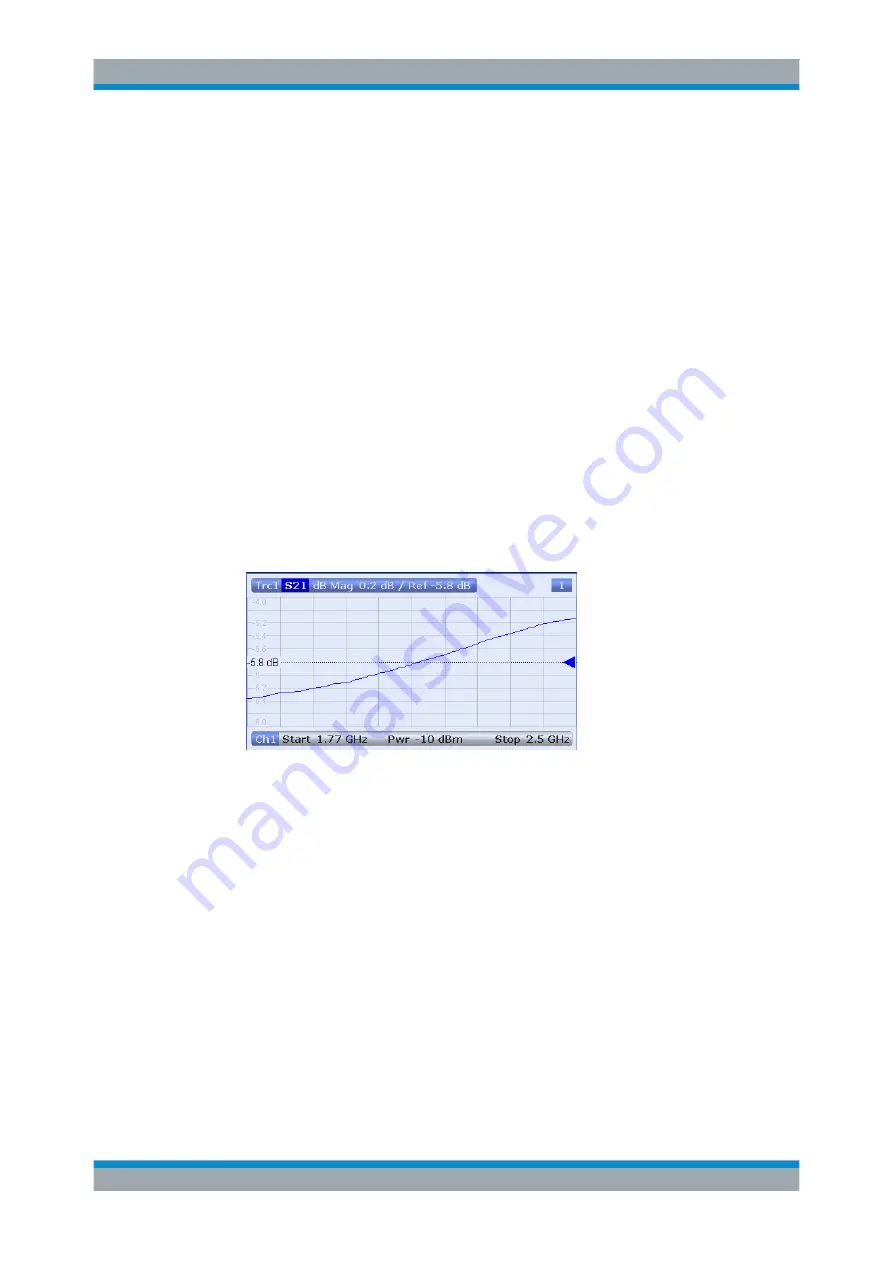
Getting Started
R&S
®
ZNB/ZNBT
68
User Manual 1173.9163.02 ─ 38
at port 2. The stimulus signal from the analyzer port no. 2 is not needed except for
some calibration types.
By default the frequency range of the analyzer is selected as sweep range is. To gain
some more insight into the transmission characteristics of your DUT you can select a
smaller sweep range.
1. Select STIMULUS – START and, in the "Start Frequency" input field of the "Stimu-
lus" softtool, enter the lowest frequency you want to measure (e.g. 1.77 GHz). For
convenient numeric entry, open the "Numeric Editor" dialog.
(See
Chapter 3.3.5.2, "Using the Numeric Editor"
Tip:
If you use the DATA ENTRY keys at the front panel for data entry (R&S
ZNB
only), simply type 1.77 and terminate the entry with the G/N key.
Refer to
Chapter 3.3.5, "Entering Data"
on page 57 to learn more about entering
numeric values and characters.
2. In the "Stop Frequency" input field enter the highest frequency you want to mea-
sure (e.g. 2.5 GHz).
3. Select TRACE – SCALE > "Scale Values" and activate the "Auto Scale Trace"
function. The analyzer adjusts the scale of the diagram to fit in the entire S
21
trace,
leaving an appropriate display margin.
Tip:
Refer to
Chapter 3.3.6, "Scaling Diagrams"
on page 60 to learn more about
the different methods and tools for diagram scaling.
3.4.1.3
Calibrating the Instrument
Calibration (system error correction) is the process of eliminating systematic, reprodu-
cible errors from the measurement results. E.g. in the current test setup, the connect-
ing cables between the analyzer ports and the DUT introduce an attenuation of the
waves on their way from the analyzer port 1 to the input of the DUT and from the DUT
output to the analyzer port 2. The length of the cables also introduces a phase shift of
the waves. Both effects impair the accuracy of the S-parameter measurement.
The analyzer provides a wide range of sophisticated calibration methods for all types of
measurements. Which calibration method should be selected depends on the expected
system errors, the accuracy requirements of the measurement, on the test setup and
on the types of calibration standards available.
Performing Measurements






























